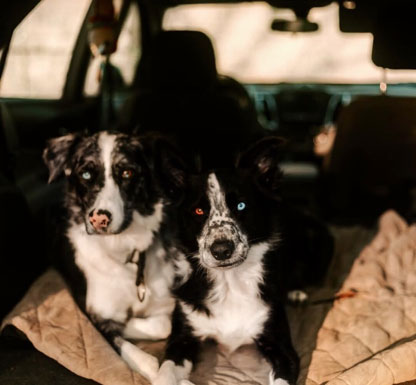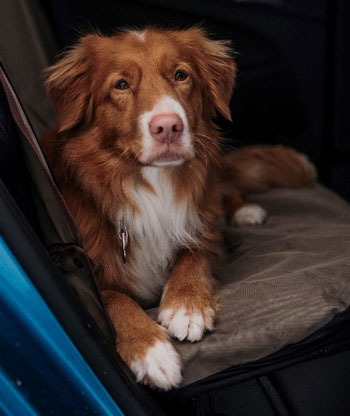Preparation is key to dealing with any disaster.
Be it a hurricane, tornado, blizzard, wildfire, flood or man-made disaster, you need a grab-and-go emergency pet evacuation kit that contains your pets’ essential supplies. No family member should be left behind in the face of danger, and it might be hard to acquire pet essentials during a rushed evacuation. A little planning ahead of time can make you rest assured you’ve got the needs of your family at heart and at hand.
So pull together a pet emergency evacuation kit and keep it handy to ensure a smooth departure in the face of disaster.
Forty-four percent of those who defied evacuation orders during Hurricane Katrina did so because they didn’t want to leave their pets behind, so the gospel of a good pet evacuation process can actually save human lives, too.
Many emergency shelters don’t allow pets, and hotels fill up quickly, so any evacuation is likely to entail a lot of travel in slow traffic. A well-organized and thoughtful pet emergency evacuation plan can make all the difference in surviving a storm with your sanity intact and whole family safe.

So what should a pet travel kit contain?
- The bag itself. You don’t want to rely on a flimsy plastic bag to carry your fur babies’ essentials. Consider a pet travel kit, or two for multiple pets. A PetSafe® Pet Travel Organizer Kit can hold up to a week’s worth of dry food, a day’s supply of water, a sleeping blanket, toys, medications and food and water bowls. A sturdy duffel bag could do the trick, but it’s important to stay as organized as possible in stressful times.
- A carrier. This is key, especially for cats. If you end up in a negative environment in inclement weather or in the company of other frightened animals, you want to keep your dogs and kitties confined and feeling somewhat safe.
- Leashes and tagged collars. Don’t leave your home without proper pet identification or proof of vaccines. If you have a just a few moments to scat, you don’t want to spend valuable time digging through drawers for spare collars. It may also help to store your pet’s vaccination records on your phone. Keep an extra collar and tags for each animal in your pet evacuation bag. Leashes are an obvious necessity, and you should take leashes for cats, too.
- Pet first-aid kit. Ask your veterinarian about the best items to include in the kit. Valuable medical supplies could include soap, rubbing alcohol, peroxide, eye wash, bandages, scissors and your pets’ medications. This is also a good place for vaccination and medical records.
- Pet waste supplies. Make sure you have disposable litter boxes for your cats, and lots of doggie waste bags. Paper towels and disinfectants could come in handy, too.
- Familiar and calming scents. Dogs and cats want to have familiar toys and blankets nearby in trying times. Consider bringing their favorite blanket or even with a familiar scent on it. Anxiety-reducing pet toys are always a good, calming option for your pups.

- Pet travel and access gear. If you must haul your family halfway up the coast to safety, you want to keep everyone as comfortable – and safe – as you can. Pet travel and access gear such as seat covers, dog barriers and car dog beds can make a big difference on a long ride. Vehicle dog ramps can also help limit the stress on your dog’s body during frequent pit stops. Dog lifting harnesses may come in handy for elderly dogs who need a hand getting out and about and into vehicles.
Evacuating family and pets ahead of disaster is at best a stressful proposition. Be prepared. Be safe. And pack a little extra patience in your boo’s bugout bag.

